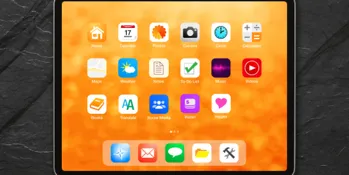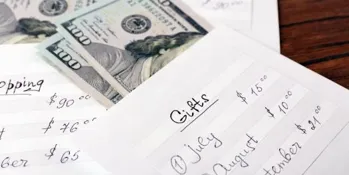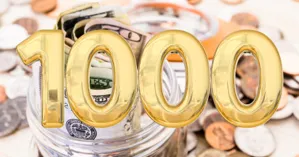
If your income isn’t going up, then the only way to give yourself a raise is to save money. Americans spend significant amounts of money on various activities, such as dining out and social events, and reducing these expenses can help save $1,000 in 30 days. Saving money doesn’t have to be sole wrenching. You can do it without making big cuts to your lifestyle. We’ve come up with the best ways to save $1,000 in 30 days.
Pack Your Lunch

The average lunch costs about $15. If you do five per week, you’re spending $300 a month. And keep in mind, that’s just for one person. If you have a spouse or children, it adds up to more. Packing your lunch saves money and time. You won’t have to leave work in the middle of the day to go and get it. And let’s face it: you can probably pack a healthier lunch than what you’d eat by buying takeout or going to a restaurant.
- Monitoring your bank account balance is crucial. By packing your lunch, you can see the savings directly reflected in your bank account, helping you reach your financial goals.
- Identifying and managing recurring costs, such as subscriptions and memberships, is essential for saving money. Reducing these regular expenses can lead to significant savings over time without drastic lifestyle changes.
Track Your Expenses
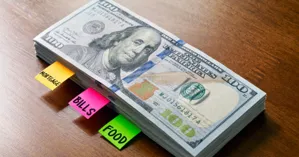
Tracking your expenses is a crucial step in saving money. By monitoring where your money is going, you can identify areas where you can cut back and allocate that money towards your savings goal. Here are some tips to help you track your expenses:
- Use a budgeting app like Mint or Personal Capital to track your spending.
- Write down every single transaction you make in a notebook or spreadsheet.
- Categorize your expenses into needs (housing, food, utilities) and wants (entertainment, hobbies).
- Set a budget for each category and stick to it.
- Review your expenses regularly to identify areas where you can cut back.
By tracking your expenses, you can save money and make progress towards your goal of saving $1,000 in 30 days.
Make Your Own Coffee

If you’re stopping for coffee in the morning, you’re probably spending five bucks a day. That adds up to $100 bucks a month. Instead, but yourself some quality beans and grind them yourself. You’ll end up brewing a great cup of Joe while saving money.
Create a Budget
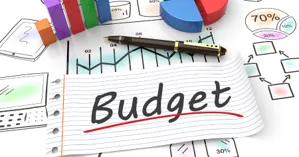
You may not think this could save you money, but knowing what your income is and what your expenses are goes a long way. You’ll see what frivolous items you’ve been spending money on during a month. It’s the best way to cut expenditures and save money, such as brewing coffee at home instead of buying it, which can contribute to a healthier bank account balance.
Meal Plan
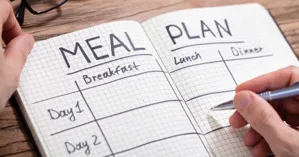
If you don’t have a plan, calling for takeout is an easy but expensive way to get dinner. Instead, decide what you’re going to eat for the week on Sunday and then shop for it. Anticipate busy nights and plan on making simple meals. You don’t have to cook gourmet food, but you’ll probably find yourself making more nutritious meals than fast food. Knowing what activities cost money can help you cut expenditures and save money.
Buy Generic or Store Brands

There’s nothing wrong with Great Value at Walmart. Skip the name brands and go generic. Instead of buying that name-brand OTC medication, go with the generic one. If you read the pills’ ingredients, you’ll find they’re the same. You’re just paying for the cost of advertising the name brand. The same goes for food. You’ll save hundreds of dollars monthly just by going with generic products. Planning meals can also lead to significant savings by avoiding the high costs of takeout and dining out.
Cancel Unnecessary Recurring Costs

Whether it’s a streaming service or a gym membership, you may have unused subscriptions that you’re spending money on each month. Consumers spend an average of $219 on monthly subscriptions. Do they use all of them; probably not. Look at your credit card bill or debit transactions and examine every subscription you have. You’ll probably find there are a few you don’t use or even know you have.
Additionally, consider switching to store brands for everyday items. Store brands offer similar quality to name brands at a significantly lower price, allowing you to save money without sacrificing quality.
Don't Impulse Buy

It’s imperative that you make impulse purchases harder. If you like to go online and peruse your favorite stores, remove your credit or debit cards from them. That will make it harder to make a purchase. That’s because you’ll need to go and get your wallet. By that time, you may decide you don’t need it. Remember that just because something is on sale, you’re saving money. You’re actually spending money, not saving. If you really feel the need to buy, walk away for three to five days. If you still want it after that amount of time, then buy it. Canceling unused subscriptions can save you several hundred dollars annually.
Refill Your Water Bottle

Drinking water from a plastic bottle is no healthier than your own filtered water and much more expensive. Buy yourself a fancy water bottle and keep it with you. You can fill it with not only water but any sports drink you wish. In fact, you can save even more on plastic bottles by buying powder mixes and making your own sports drinks. The best part about that fancy water bottle is it will keep your beverage cool. Many impulse purchases end up gathering dust and could be avoided to save money.
Negotiate all Your Bills

Some service providers will offer better deals if you ask. Whether it’s your cell phone, insurance or internet subscriptions, give them a call and see if they have any deals they can offer you. The best time to do this is if you’re no longer under contract or during Black Friday or Cyber Monday. If you’re a student or senior, there may even be a discount available to you.
Additionally, refilling your water bottle can provide quick cash savings by avoiding the cost of buying bottled water.
Sell Your Stuff

Selling your unwanted items on Facebook Marketplace is a great way to make some extra cash and declutter your home. Here are some tips to help you get started:
- Take clear and well-lit photos of the items you want to sell.
- Write a detailed and honest description of each item, including its condition and any flaws.
- Set a competitive price for each item based on similar listings in your area.
- Respond promptly to inquiries and messages from potential buyers.
- Be prepared to negotiate prices and be flexible.
By selling your unwanted items on Facebook Marketplace, you can make some extra money and get closer to your goal of saving $1,000 in 30 days.
Automate Your Savings

Automating your savings is a great way to make saving money easier and less prone to being neglected. Here are some tips to help you automate your savings:
- Set up automatic transfers from your checking account to your savings account.
- Use a savings app like Qapital or Digit to automatically transfer small amounts of money into your savings account.
- Take advantage of employer-matched retirement accounts like 401(k) or IRA.
- Set up a separate savings account specifically for your emergency fund.
- Make saving a habit by setting up automatic transfers on a regular basis.
By automating your savings, you can make progress towards your goal of saving $1,000 in 30 days without having to think about it.
Conclusion
You can save $1,000 every month by using suggestions on this list. It doesn’t take cutting your expenses to the bone, but it does take thoughtfulness when it comes to spending. Negotiating bills can be as effective as working extra hours or extra shifts to save money.


